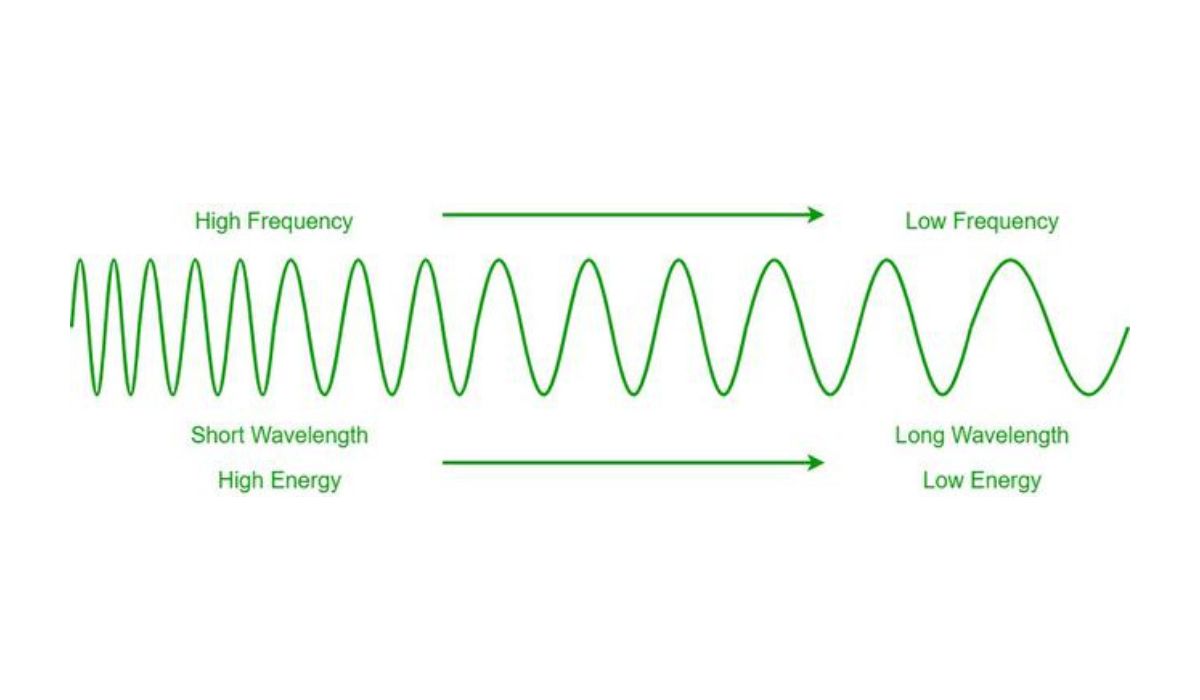Home>Events & Info>Frequency>How Can You Change The Frequency Of The Wave?


Frequency
How Can You Change The Frequency Of The Wave?
Published: February 18, 2024
Learn how to change the frequency of a wave and understand its impact on different systems. Explore methods for adjusting frequency effectively.
(Many of the links in this article redirect to a specific reviewed product. Your purchase of these products through affiliate links helps to generate commission for AudioLover.com, at no extra cost. Learn more)
Table of Contents
Introduction
Understanding the Fundamentals of Wave Frequency
When we think of waves, our minds often conjure up images of the ocean’s ebb and flow or the mesmerizing undulations of sound. However, the concept of waves extends far beyond these familiar examples. In the realm of physics and engineering, waves are ubiquitous and play a pivotal role in numerous applications, ranging from telecommunications to medical diagnostics. At the heart of these diverse phenomena lies the fundamental property of wave frequency, which governs the very nature of these oscillations.
Wave frequency, a critical parameter in the study of waves, refers to the number of complete oscillations or cycles of a wave that occur in a unit of time. This crucial characteristic determines the pitch of a sound wave, the color of light, and the data transmission rate in telecommunications. Understanding how to manipulate wave frequency opens up a world of possibilities, enabling us to harness the power of waves for a myriad of practical purposes.
Throughout this article, we will delve into the intricacies of wave frequency, exploring the factors that influence it and the methods through which it can be altered. By gaining insights into these concepts, we can unlock a deeper understanding of the pervasive role of waves in our daily lives and the remarkable potential they hold for technological innovation and scientific discovery.
Understanding Wave Frequency
To comprehend the concept of wave frequency, it is essential to grasp the nature of waves themselves. Waves, whether they manifest as sound, light, or electromagnetic radiation, propagate through a medium or space, exhibiting characteristic patterns of oscillation. The frequency of a wave denotes the number of complete cycles it undergoes in a given unit of time, typically measured in hertz (Hz).
For instance, in the context of sound waves, frequency determines the pitch of the sound. Higher frequencies correspond to higher-pitched sounds, while lower frequencies produce lower-pitched tones. In the realm of light, frequency dictates the color of the electromagnetic wave, with higher frequencies associated with bluer hues and lower frequencies yielding redder tones. This fundamental principle underscores the pervasive influence of wave frequency across diverse domains, from music and art to telecommunications and scientific research.
Moreover, wave frequency is intrinsically linked to the concept of wavelength, which represents the distance between successive peaks or troughs of a wave. The relationship between frequency and wavelength is inversely proportional, meaning that as frequency increases, wavelength decreases, and vice versa. This reciprocal association underpins the behavior of waves and is instrumental in understanding their propagation and interactions with the surrounding environment.
By comprehending the intimate connection between wave frequency and the observable characteristics of waves, we can appreciate the profound impact of this fundamental property on our perception of the world. Whether we are marveling at the vibrant hues of a sunset, relishing the melodic strains of music, or harnessing the power of wireless communication, wave frequency lies at the heart of these captivating phenomena, shaping our experiences and driving technological advancements.
Factors Affecting Wave Frequency
Wave frequency, a fundamental attribute of oscillatory phenomena, is influenced by a myriad of factors that govern the behavior of waves. Understanding these determinants is crucial for comprehending the intricate dynamics of wave propagation and manipulation. Several key elements shape the frequency of waves, encompassing the nature of the source, the properties of the medium through which the waves travel, and the effects of external influences.
One pivotal factor impacting wave frequency is the nature of the source generating the waves. For instance, in the realm of sound waves, the frequency of the emitted sound is directly correlated to the vibrations of the source. A rapidly vibrating object produces high-frequency sound waves, while slower vibrations yield lower frequencies. Similarly, in the context of electromagnetic waves, the frequency of radiation emanating from a source, such as an antenna or a light-emitting diode, is determined by the inherent properties of the emitting entity.
Furthermore, the medium through which waves propagate exerts a significant influence on their frequency. In a uniform medium, such as air or water, the frequency of waves remains relatively constant as they travel. However, when waves encounter a boundary between different media or undergo interactions with obstacles, their frequency can be altered due to phenomena such as reflection, refraction, and diffraction. These dynamic processes give rise to changes in wave frequency, shaping the intricate patterns of wave behavior observed in diverse environments.
External factors, such as the presence of interfering waves or the application of external forces, can also modulate wave frequency. Interference between waves, arising from the superposition of multiple waveforms, can lead to the formation of regions of constructive and destructive interference, thereby influencing the overall frequency of the resulting wave pattern. Additionally, the application of external forces, such as gravitational or electromagnetic fields, can induce changes in wave frequency, elucidating the profound interplay between waves and the forces acting upon them.
By unraveling the multifaceted interplay of these factors, we can gain a deeper appreciation for the intricate dynamics of wave frequency and its pervasive influence across diverse domains. Whether we are exploring the nuances of acoustics, unraveling the mysteries of light and optics, or harnessing the potential of wireless communication, the interwoven effects of these factors shape the rich tapestry of wave phenomena, underscoring the profound significance of wave frequency in our lives.
Methods to Change Wave Frequency
Manipulating the frequency of waves constitutes a pivotal endeavor in various scientific, technological, and artistic domains, offering a means to tailor the properties of waves to suit specific applications. A diverse array of methods exists to alter wave frequency, encompassing techniques rooted in physics, engineering, and creative innovation. These methods enable the modulation of wave frequency across different spectra, from sound and light to electromagnetic radiation and beyond, unlocking a spectrum of possibilities for practical utilization.
One prominent approach to changing wave frequency involves the use of specialized devices known as frequency converters. These devices, prevalent in the realm of electronics and signal processing, facilitate the transformation of wave frequencies through techniques such as frequency multiplication, division, and mixing. By employing frequency converters, engineers and researchers can manipulate the frequency of electromagnetic waves, enabling applications ranging from wireless communication systems to radar and imaging technologies.
Another method to alter wave frequency pertains to the principles of wave modulation, wherein the frequency of a carrier wave is varied in accordance with an input signal. This technique, known as frequency modulation (FM), is widely employed in radio broadcast systems, where the frequency of the carrier wave is modulated to encode audio signals. Similarly, in the domain of optics, techniques such as electro-optic modulation and acousto-optic modulation enable the manipulation of light wave frequencies, underpinning advancements in telecommunications and optical signal processing.
Furthermore, the utilization of resonant systems offers a compelling avenue to modify wave frequency. Resonant structures, such as acoustic resonators and optical cavities, exhibit distinct frequency-dependent behaviors, allowing for the selective amplification or attenuation of specific wave frequencies. These resonant systems find applications in diverse fields, including musical instrument design, laser technologies, and acoustic filtering, showcasing the versatility of resonant phenomena in shaping wave properties.
Creative endeavors in the realms of art and music also embrace methods to alter wave frequency, exemplified by techniques such as pitch shifting and time-stretching in audio processing. These approaches enable artists and producers to manipulate the frequencies of sound waves, fostering innovative sonic landscapes and expressive compositions.
By harnessing these diverse methods, scientists, engineers, and artists can unlock the transformative potential of wave frequency modulation, paving the way for groundbreaking innovations in communication, imaging, entertainment, and beyond. The seamless manipulation of wave frequencies fuels a spectrum of technological advancements, underscoring the profound impact of these methods on our modern world.
Conclusion
Wave frequency stands as a cornerstone of the intricate tapestry of wave phenomena, shaping the fundamental properties of sound, light, and electromagnetic radiation. Through our exploration of wave frequency, we have unveiled the profound influence of this parameter on our perception of the world and its pivotal role in diverse domains, from scientific research to artistic expression.
By delving into the factors influencing wave frequency, we have gained insights into the dynamic interplay of sources, mediums, and external influences, elucidating the multifaceted nature of wave behavior. Furthermore, our exploration of methods to change wave frequency has underscored the diverse array of techniques and technologies that enable the seamless manipulation of wave properties, fostering innovation and advancement across a spectrum of fields.
As we navigate the realms of physics, engineering, and creative expression, the ability to alter wave frequency empowers us to tailor the characteristics of waves to suit specific needs, driving progress in communication, imaging, and artistic endeavors. Whether we are marveling at the symphonic resonance of a musical composition, harnessing the potential of wireless communication, or unraveling the mysteries of light and optics, wave frequency serves as a guiding force, shaping our experiences and propelling us toward new frontiers of discovery.
In essence, the dynamic interplay of wave frequency and its manipulation encapsulates the boundless potential of waves as a conduit for innovation and expression. By embracing the nuances of wave frequency, we embark on a journey of exploration and creativity, unveiling the transformative power of waves in our quest for knowledge and ingenuity.
As we continue to unravel the mysteries of wave phenomena and harness their potential, the resonance of wave frequency reverberates as a testament to the enduring impact of waves on our understanding of the universe and our endeavors to shape the world around us.











